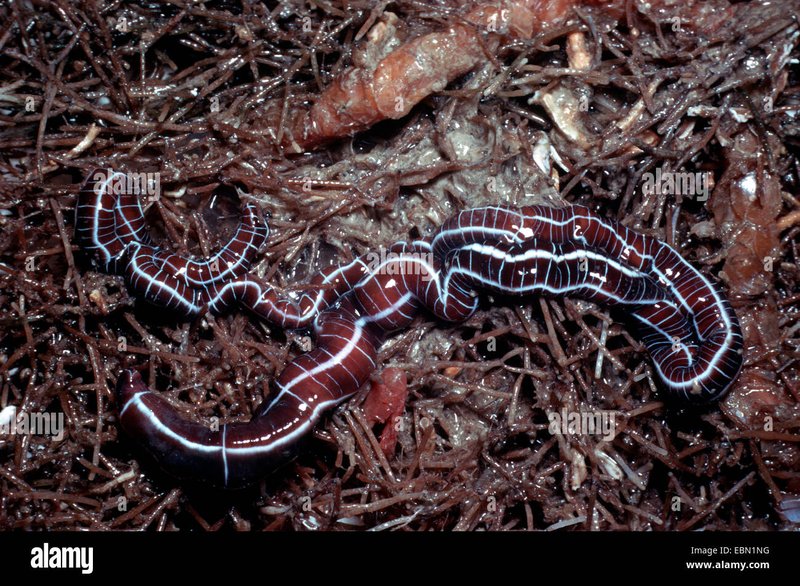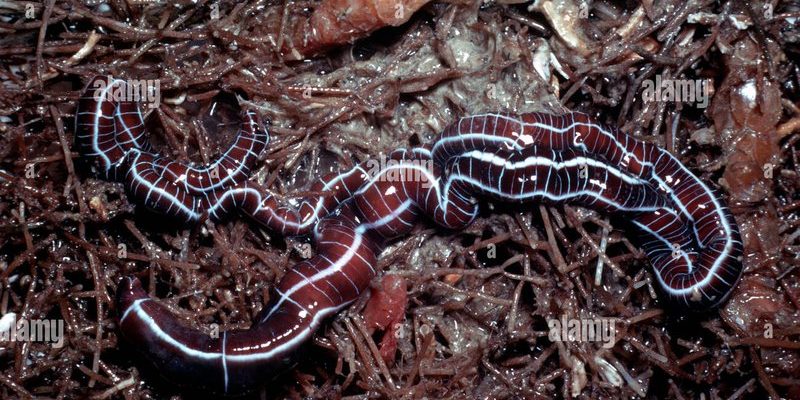
Bootlace worms and ribbon worms belong to different families within the vast world of marine creatures. Both can be found snaking their way through the ocean, but their lengths, habitats, and even their diets tell different stories. Let me take you through a closer look at these intriguing organisms, their characteristics, and how they measure up against each other.
What Are Bootlace Worms?
Bootlace worms, scientifically known as *Lineus longissimus*, are real wonders of nature. They can grow to be the longest worms in the world, often reaching lengths of up to 55 meters (about 180 feet)! If you saw one of these in the water, you’d probably do a double-take. They often look like a thick, wiggly ribbon, hence their name. These creatures are typically found in the North Atlantic, especially in shallow waters, where they burrow into the sand or float freely.
These worms are known for their unique appearances, often displaying a brownish or yellowish hue with a shiny, almost silky texture. They’re not just long; they are also pretty stretchy. Bootlace worms can contract and expand their bodies, making them fascinating to observe in their natural habitat. They’re a huge fan of warm waters, where they thrive off decaying organic matter, making them important players in the marine ecosystem.
What Are Ribbon Worms?
Now, let’s talk about ribbon worms, or *Nemertea*. This group includes a variety of species, some of which also display striking lengths but may not reach the extremes of bootlace worms. Ribbon worms can be found in both marine and freshwater environments, and they come in a range of colors, from greens to reds, making them quite beautiful in their own right.
These worms have a different lifestyle compared to bootlace worms. While some species are free-swimming, others prefer to stay hidden in the sediment or among coastal rocks. Ribbon worms are also known for their unique feeding habits; they possess a specialized structure called a proboscis, which they use to capture prey like small fish and crustaceans. It’s almost like having a built-in fishing rod!
Key Differences Between Bootlace and Ribbon Worms
Let’s break it down with some key differences. When comparing bootlace worms to ribbon worms, here are the main points to consider:
- Length: Bootlace worms can grow extraordinarily long, while ribbon worms vary widely in size.
- Habitat: Bootlace worms prefer shallow marine waters, while ribbon worms can be found in both marine and freshwater environments.
- Feeding Mechanism: Bootlace worms mostly eat decaying matter, while ribbon worms actively hunt their prey using a proboscis.
- Appearance: Bootlace worms often look like flat, textured ribbons, while ribbon worms can be colorful and come in various shapes.
Understanding these differences can help you appreciate the diversity within the worm family.
Feeding Habits: What Do They Eat?
Feeding habits are significant when we compare bootlace worms to ribbon worms. Bootlace worms are scavengers, meaning they feed on dead organic material. They play a crucial role in the ecosystem by breaking down waste and recycling nutrients back into the environment. This process helps keep ocean floors clean and promotes the health of marine habitats.
Ribbon worms, on the other hand, have a more dynamic approach to feeding. Their proboscis allows them to extend their reach and snatch up unsuspecting prey, making them active hunters. This hunting technique not only showcases their adaptability but also adds to the complexity of the marine food chain.
You might wonder why these differences matter. Well, they highlight the varied roles each type of worm plays in their ecosystems. While bootlace worms focus on recycling nutrients, ribbon worms help control populations of smaller marine creatures.
Reproduction: How Do They Multiply?
Reproduction can be quite different between bootlace worms and ribbon worms, adding another layer to our comparison. Bootlace worms typically reproduce through a process called asexual fragmentation. This means that if a bootlace worm is cut in half—whether by a predator or some other mishap—each half can regenerate into a new individual. It’s like a worm version of a superhero’s ability to come back after a tough battle!
Ribbon worms, however, reproduce mainly through sexual reproduction. Depending on the species, they can have complex mating rituals, which might include colorful displays or the release of pheromones to attract partners. This method of reproduction allows for genetic diversity, which is important for the health of populations over time.
So, while bootlace worms can multiply quickly through fragmentation, ribbon worms take the more traditional route, finding mates for reproduction.
Ecological Importance
Both bootlace worms and ribbon worms play vital roles in their ecosystems, even if their contributions differ slightly. Bootlace worms are excellent recyclers, breaking down dead plant and animal matter, which enriches the ocean floor with nutrients. This nutrient cycling supports the growth of various organisms, including plants and smaller fish, ultimately keeping the marine ecosystem balanced.
Ribbon worms, with their predatory nature, help maintain the populations of other small marine organisms. By controlling these populations, they contribute to the overall health of their habitats. Without ribbon worms, certain species might proliferate unchecked, which could disrupt the balance in their ecosystems.
In essence, both types of worms, though different in their lifestyles, are essential for marine health. It’s a reminder of how interconnected everything is in nature—every creature has a role to play.
Conservation: Are They Facing Threats?
Just like many creatures in our oceans, both bootlace worms and ribbon worms face challenges due to human activities. Changes in climate, pollution, and overfishing can impact their habitats and food sources. For example, the degradation of marine environments can lead to a decline in the organic matter that bootlace worms rely on for food.
Ribbon worms also encounter issues, especially in changing ecosystems. As temperatures rise and pollution increases, their prey may be affected, altering their food web dynamics. This could lead to declines in ribbon worm populations, causing ripples throughout their ecosystem.
To help these fascinating creatures, it’s essential to promote marine conservation efforts. This includes reducing pollution, protecting marine habitats, and advocating for sustainable fishing practices. By taking these steps, we can help ensure that bootlace worms and ribbon worms continue to thrive.
Comparing bootlace worms to ribbon worms reveals a world of wonder beneath the waves. Though they may share similarities, their differences are just as intriguing. From their feeding habits and reproductive strategies to their roles in the ecosystem, each type of worm contributes in unique ways.
Understanding these creatures not only enhances our appreciation for marine life but also emphasizes the importance of conservation. So next time you think about worms, remember the diversity that exists within them. Whether it’s the long and slender bootlace worm or the colorful ribbon worm, both are essential players in the intricate web of life in our oceans, each deserving a spot in our appreciation of nature’s wonders.

